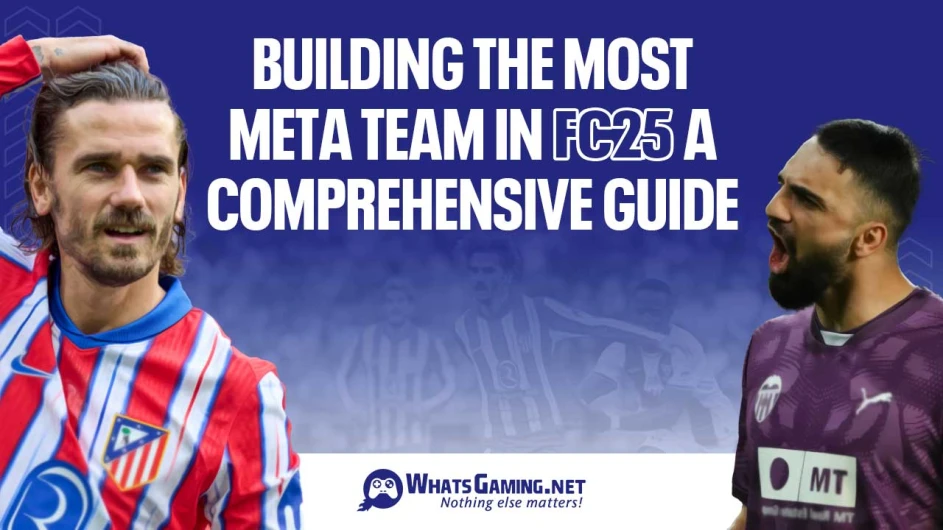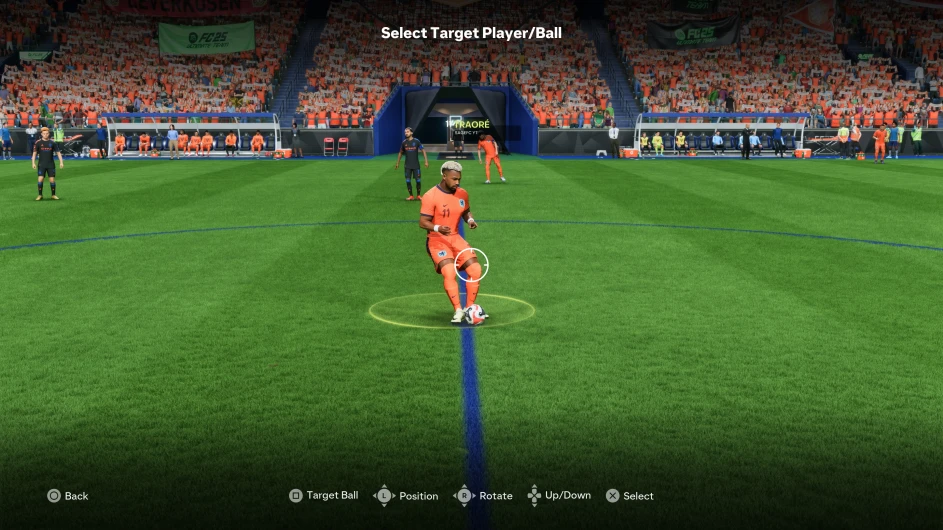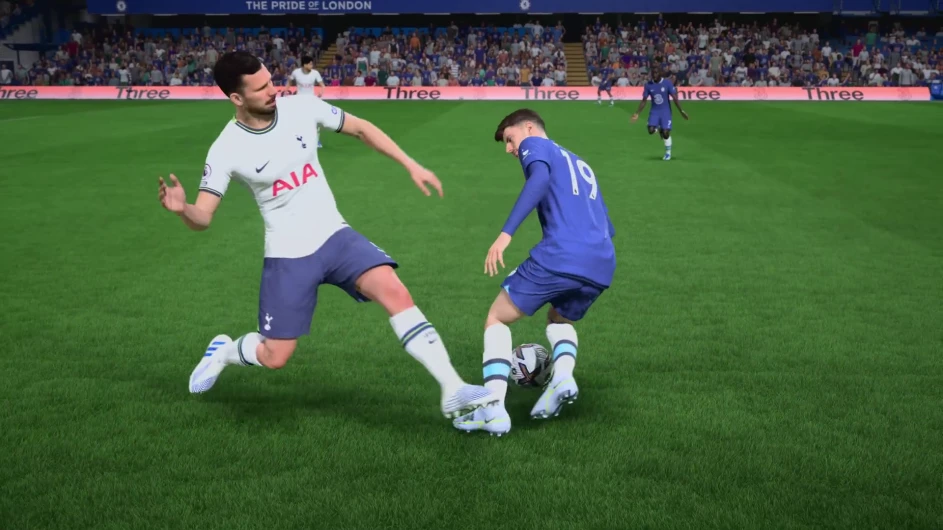
Building the Most Meta Team in FC 25: A Comprehensive Guide
In every iteration of the FC series, one of the most hotly debated and closely watched aspects is the evolving meta – the most effective tactics available. Players continually seek ways to maximize their squads’ performance, whether through formations, chemistry styles, or by identifying under-the-radar gems who outperform even high-rated icons.
In this comprehensive guide, we explore what is currently considered the most meta team in FC 25, supported by in-depth performance metrics and role-based analysis. We also take into account formation adaptability and performance data to give players the best possible insight into squad optimization.

Understanding the Meta in FC 25
Before jumping into the squad itself, it's crucial to understand what the term "meta" truly represents. The meta is short for "most effective tactics available," and in FC 25, it's influenced by multiple gameplay elements such as player body types, play styles, acceleration types, chemistry links, and even hidden in-game performance factors.
The concept of meta isn't static. As new cards are released, promotions come and go, and mechanics are patched, the ideal setup can change drastically in a matter of weeks. Hence, staying updated and flexible is vital to remain competitive.
Formation and Tactical Setup
The formation utilized in this build is the 4-4-1-1. Known for its balance between defensive solidity and attacking versatility, this setup offers flexibility in how players approach different in-game scenarios. It enables fluid transitions from midfield to attack and provides enough structure to fend off quick counterattacks.
This build emphasizes players who are not only highly rated but also statistically verified to excel in specific roles. Each player's role has been assessed based on their real-time performance across numerous games and formations, ensuring optimal deployment.
Goalkeeper: The Last Line of Defense
The top-rated goalkeepers at this stage in FC 25 are Donnarumma and Buffon. Both offer exceptional reflexes and positioning and are tied in terms of performance metrics. Whether facing finesse shots or one-on-one breakaways, these goalkeepers offer top-tier shot-stopping ability and consistent match-saving interventions.
Chemistry styles are particularly important for goalkeepers, affecting attributes like handling, kicking, and speed. A well-applied chem style can turn a good keeper into a game-changer.
Fullbacks: Balance of Attack and Defense
The role of fullbacks has evolved significantly in modern FC gameplay. No longer confined to just defending wide areas, they are now expected to overlap, contribute to the attack, and deliver precise crosses.
On the right, Rhys James ranks among the highest-performing fullbacks, delivering solid defensive work alongside dangerous forward runs. His balance of pace, strength, and passing makes him ideal for the role.
Interestingly, Ciro Immobile—usually a striker—has a version that is deployed as a left back in this meta squad. His adaptability and in-game intelligence make him an unusual but surprisingly effective choice when equipped with the right chemistry style.
Center-Backs: Strength and Intelligence
In central defense, three names stand out: Tah, Virgil van Dijk, and Jan Oblak. The latter, although typically a goalkeeper, has a special version that allows deployment as a center-back, and he leads the rankings due to his impressive tackling and interception stats.
These defenders are chosen not only for their raw defensive stats but also for their positioning, physical presence, and ability to distribute the ball from the back. Each is evaluated based on performance metrics rather than traditional ratings alone, ensuring their effectiveness in high-level play.
Central Midfield: Engine Room of the Team
In the heart of midfield, the build features Vitinha and Kosung Byum. Both players shine with high energy, vision, and the ability to maintain possession under pressure. Vitinha, especially in his Team of the Season version, offers playmaking qualities and defensive awareness, making him a perfect box-to-box midfielder.
Kosung Byum provides versatility and power. His presence in midfield ensures both attacking support and defensive resilience, a combination vital in maintaining control of the game's tempo.
Another noteworthy option, although not included in the starting XI here, is Jaume Neves. His stats may look superior on paper, but Vitinha’s in-game performance earns him the nod due to his ranking and chemistry advantages.

Wide Midfielders: Inside Forwards Leading the Attack
On the left, Heung-Min Son is deployed as an inside forward. Known for his lethal finishing and impeccable timing, Son also ranks as one of the top strikers in the game, demonstrating his flexibility. His ability to cut inside and strike from distance makes him an ideal fit for the 4-4-1-1 setup.
On the right, while several high-profile names like Dembele, Rafinha, and Messi are all viable, Kovacic stands out in this particular build. Though unconventional, his unique blend of control, balance, and tactical positioning makes him an excellent option in this role.
Attacking Midfield: The Creative Catalyst
Lionel Messi features in the central attacking midfield role (CAM), where he excels. Messi’s vision, passing, and long-range shooting make him a lethal force behind the striker. Despite being highly rated in multiple positions, it’s as a CAM where Messi truly dominates, topping performance charts.
His ranking ahead of names like Rafael Leão, Kaká, and Gallagher affirms his place in this lineup. Chemistry-wise, Messi integrates seamlessly with other key players, contributing to the fluidity of the team’s attacking play.
Striker: Clinical and Creative
Luis Suárez leads the line, forming a potent strike force. With a joint top ranking alongside Son and Kaká, Suárez provides a powerful presence in the box, capable of both creating and finishing chances. His finishing ability, physicality, and pressing make him an ideal spearhead for this meta setup.
It’s worth noting that even icons like R9 do not currently make it into the most effective striker rankings, emphasizing the importance of role-based performance over traditional prestige.
Key Evolutions and Upgrades
One of the defining features in FC 25 is the evolution system, allowing players to enhance certain base cards. Several evolved players perform on par with or even surpass top-tier meta cards.
Examples include:
Tossen (93.1): A dynamic player with elite-level stats.
Kobe Meunier, Isaac, and others who become indispensable post-evolution.
Evolution upgrades such as “Long Ball Pass” or “Incisive Pass” can boost players’ effectiveness significantly, sometimes turning a squad discard into a world-beater.
These upgrades give managers the opportunity to reinvent their teams without overspending on the transfer market. By carefully selecting players to evolve, it's possible to compete with top squads without premium packs or SBC grinding.

In-Game Performance and Match Review
Testing the team in three full matches provided valuable insights:
Match One:
A commanding 4-0 victory. Son, Kovacic, and Suárez each contributed, with the team displaying exceptional fluidity. The pressure generated by the 4-4-1-1 formation overwhelmed the opposition from the start.
Match Two:
An even more dominant display, ending 6-0. Messi showcased his finesse shot prowess, while Suárez and the midfielders carved open the defense with slick passing. The chemistry between players was evident, with fast, intelligent attacks consistently yielding goals.
Match Three:
A 5-1 win, conceding the first goal of the testing series. Despite the minor setback, the team showed resilience, with Messi, Suárez, and Son all performing. Evolution-based players like Kosung Byum also shone, validating their inclusion.
Under-the-Radar Meta Players
A highlight of the current meta is the emergence of high-performing, less expensive options. Players such as:
Insigne, often overlooked but highly ranked
Jarry Simmonds, particularly in evolved form
Devry (97.8-rated as a center mid with only three play styles), showcasing how underrated players can surpass expectations
These examples highlight the importance of evaluating performance over price or fame. Smart team building can deliver world-class results without breaking the virtual bank.

Conclusion: The Ever-Changing Meta
This team reflects the current meta in FC 25, but it’s important to note that things can change rapidly. With new promotions like Shapeshifters around the corner, new cards will continue to shift the rankings.
Staying updated with in-game developments and continuously analyzing player performance are essential to maintaining a competitive edge. Flexibility, creativity, and a data-driven approach to team building can offer significant advantages over traditional, ratings-based methods.
Whether you're a casual player or a seasoned competitor, understanding the evolving nature of the meta and adapting your squad accordingly is key to success.
We will share more updates on FC 25 in separate articles. If you found this information helpful or would like to learn more, please be sure to explore the other articles on our site.



